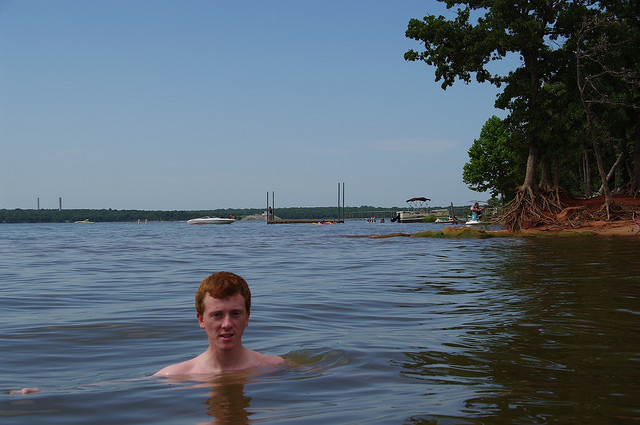
Lake Thunderbird
Lludo


Lake Thunderbird
Lludo
Moore, Norman and Oklahoma City are the primary polluters of Lake Thunderbird, a sensitive drinking water source classified as “impaired” by the Environmental Protection Agency, new data show.
State and municipal water and environmental authorities have been working on a plan to clean up the lake, colloquially referred to as “dirtybird” for its murky appearance and weird smell, which still hasn’t met Clean Water Act target dates from 30 years ago.
The state Department of Environmental Quality has built computer models of the pollution and presented a possible solution, which requires the three cities to reduce runoff into the lake’s tributaries, the Norman Transcript’s Joy Hampton reports:
Under the proposal, construction sites would have to maintain a 100-foot vegetative buffer for all streams, put in sediment basins (detention ponds) for sites five acres and larger, submit to weekly inspections, plant vegetation quickly and test the soil before using fertilizer.
Lake Thunderbird is a source of drinking water for Norman, Midwest City and Del City, but suffers from a whole host of water quality problems, the Journal Record’s Sarah Terry-Cobo reports:
… pollution from algae blooms causes the water to have a funny smell. The high levels of fertilizer and sediment pollution also make it difficult and costly for the city of Norman to treat the water for drinking purposes. In addition, the lake has low oxygen levels, due to algae blooms, so it can’t support fish and other aquatic life well.
Urban development contributes the most phosphorus and sediment to the lake, DEQ data show, the Transcript reports. And urban development is one of the main reasons Thunderbird looks so dirty, the Journal Record reports:
Erosion from construction sites, as well as from paved surfaces in developed areas, leads to high levels of dirt flowing into the watershed. High winds keep the lake churned, giving it a muddy appearance.
The DEQ proposal is in a public comment period through Aug. 1 and will have to be approved by the EPA.